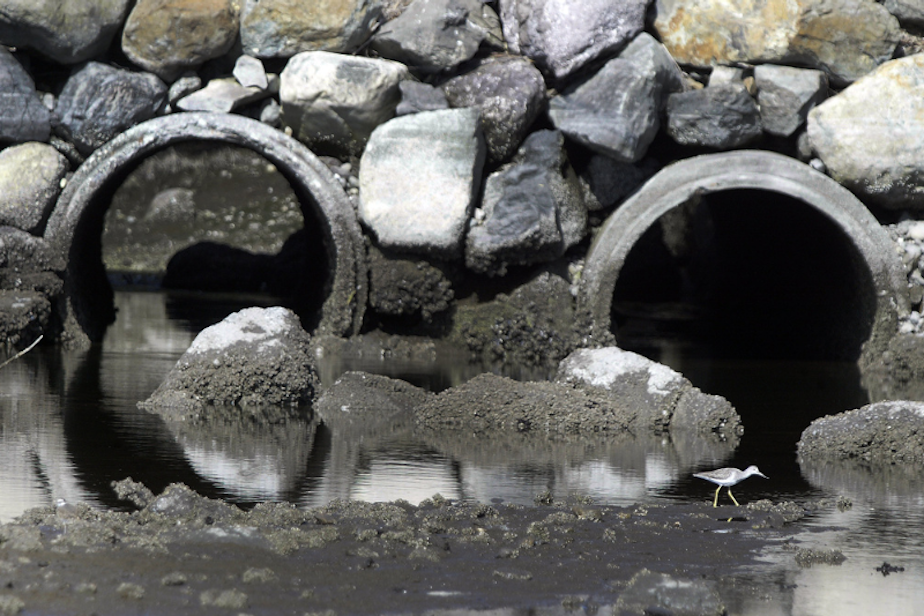New culverts in Washington state cost $20 million each. The DOT needs to replace 400 of them by 2030

The Washington State Department of Transportation has a lot of very expensive projects it has to manage in order to keep people moving around — consider all of our crumbling roads and bridges. As if that weren't enough, there's the aging ferry fleet, too.
But WSDOT and state legislators recently got some pretty massive sticker shock for a different project — one that’s aimed at improving the way salmon move around.
Salmon culverts that are supposed to allow water and fish to move under roadways haven’t been working very well. The state is legally required to fix that, and lawmakers just learned it’s going to be very, very pricey.
Seattle Times transportation reporter David Kroman and investigative reporter Mike Reicher have reported on what the $4 billion dollar increase to tackle the culverts will mean for the state’s transportation budget.
"This is a problem that they really have to face," Kroman said. And so the question becomes what happens to those other problems not mandated by a federal court — do those slow down or get cut in order to make room for the fish culverts?
Washington state has been working on culverts for several years, according to Reicher. In 2013, a federal injunction required the state to fix a large portion of their culverts by 2030, after 21 tribes and the federal government sued Washington.
By 2021, the Department of Transportation had only replaced 84 of the more than 400 culverts they needed to tackle.
And in the last couple of years, they realized how much more expensive the rest of the culverts will be.
"They are going up in costs because the projects are more complex than the first ones that the state did," Reicher said.
The average cost to replace a culvert went from $5 million in 2018 to $20 million per culvert. A litany of tedious and complex steps in the process are some of the reasons behind the hefty cost.
"They're building multiple bridges to go over these streams, they have to relocate on and off ramps, and they have complex engineering that they're seeing now in the upcoming projects because of things like poor soil conditions," Reicher said.
Construction costs and a labor shortage are also driving up costs.
With the clock ticking to fulfill the court-ordered mandate, the state has few options when it comes to addressing the culverts.
The state, or the 21 tribes affiliated with the lawsuit, could ask Judge Ricardo S. Martinez to revisit the injunction, according to Reicher.
"If they don't go back to court, then the two options are really the same options that any government faces when looking at a revenue shortfall — you either get new revenue or more revenue, or you make cuts," Kroman said.
Listen to the full interview with Mike Reicher and David Kroman by clicking the play button at the top of the story.


